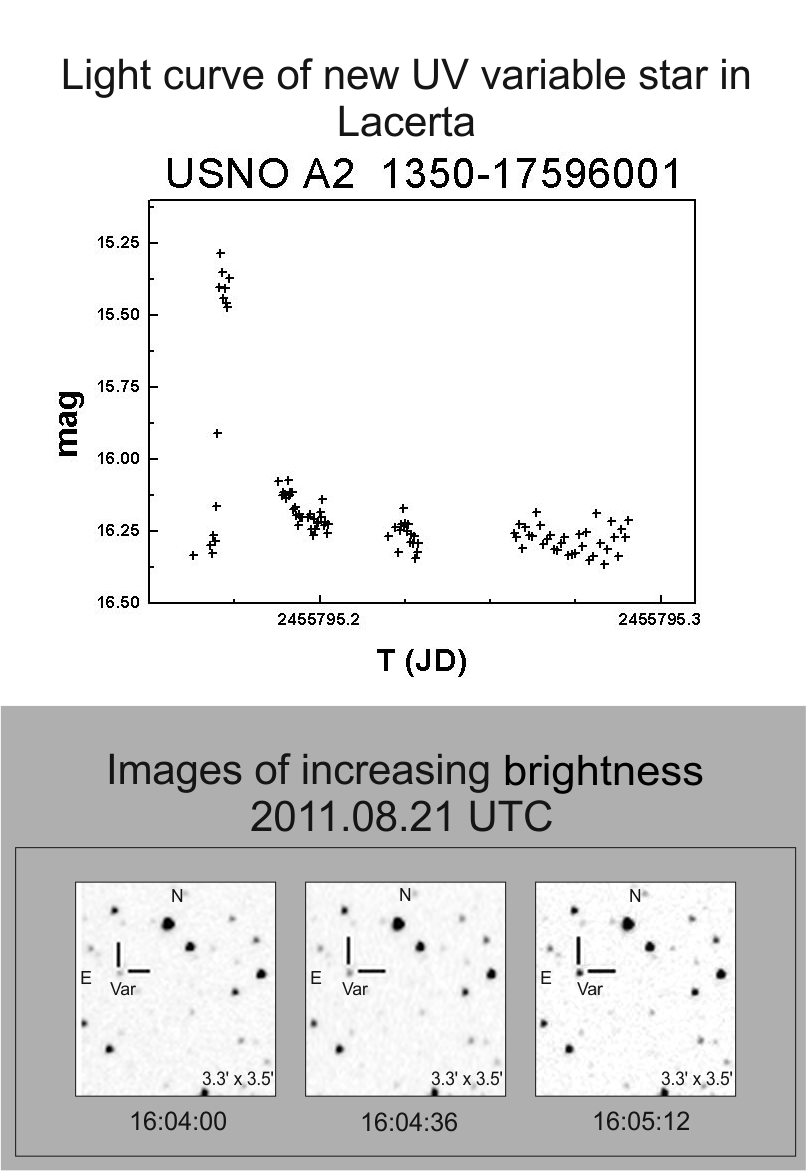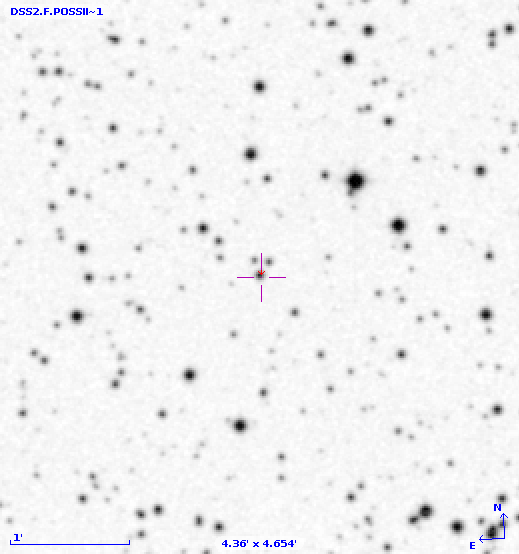| Article in PDF |
"Peremennye Zvezdy", Prilozhenie, vol. 12, N 3 (2012) |
New UV-type Variable Star in Lacerta
S. A. Veselkov, E. G. Lapukhin
Siberian State Aerospace University, Krasnoyarsk, Russia
| ISSN 2221–0474 |
Received: 26.11.2011; accepted: 23.03.2012
(E-mail for contact: slovoktk@mail.ru)
| ||||||||||||||||||||||
Remarks: |
| On 21 August 2011, we obtained unfiltered observations of a field in Lacerta and
discovered a transient event. It is a UV-type variable star.
Our observations were performed in the city of Krasnoyarsk (at the Observatory of
Siberian
State Aerospace University) with a Hamilton telescope (D = 400 mm, F = 915 mm) equipped
with an FLI ML9000 CCD chip (3056x3056 pixels, pixel size 12 μm).
All images were obtained with 30-second exposure times.
MaxImDL software was used for photometry and for basic reductions for dark current,
flat fields and bias.
The magnitudes were referred to red magnitudes of comparison stars from the USNO-A2.0
catalog (Monet et al. 1998). The comparison stars were: USNO-A2.0 1350-17590812: 22h 56m 46s.55, +50° 15′ 38″.4 (J2000); 15m.151 (R) USNO-A2.0 1350-17588369: 22h 56m 40s.99, +50° 17′ 32″.5 (J2000); 15m.357 (R) USNO-A2.0 1350-17595910: 22h 56m 58s.27, +50° 17′ 35″.0 (J2000); 15m.254 (R) |
| References: |
| Monet, D., Bird, A., Canzian, B., et al., 1998, USNO-A2.0, A Catalog of Astrometric
Standards (U.S. Naval Observatory, Washington, DC),
Centre de Donnees Astronomiques de Strasbourg, I/252 |
Light Curve
The light curve of the transient and three images of the region, showing the star increasing its brightness. Left: the star is near minimum; middle: between minimum and maximum; right: the star is at maximum. Finding Chart 
Data Source |